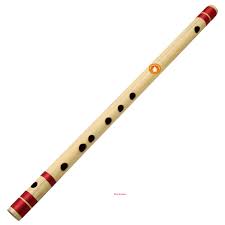
"Harmonizing Cultures: The Melodic Journey of Indian and Western Flutes"
In the realm of musical instruments, the flute stands as a universal symbol of melodic grace and ethereal resonance. Whether in the serene melodies of Indian classical music or the enchanting harmonies of Western classical and contemporary genres, the flute transcends cultural boundaries, captivating hearts with its emotive allure. Let's embark on a harmonious exploration of the Indian and Western flutes—unveiling their distinct characteristics, cultural significance, and enduring legacy.
Indian Flute: Echoes of Divine Melodies
Origins and Tradition:
The Indian flute, often referred to as the 'bansuri,' traces its roots to ancient Indian mythology and scriptures. Its association with Lord Krishna, the divine cowherd, elevates its significance as a symbol of spiritual devotion and celestial music.
Design and Sound:
Crafted from bamboo with finger holes and a simple, elegant design, the bansuri produces hauntingly beautiful tones. Its cylindrical shape and the absence of keys require precise fingering techniques to produce a diverse range of notes and microtonal variations.
Musical Expression:
In Indian classical music, the bansuri serves as a vehicle for 'raga' exploration, allowing musicians to evoke emotions and paint vivid musical landscapes. The breathy, resonant tones produced by skilled flutists convey a sense of serenity and transcendence.
Western Flute: Elegance in Classical and Contemporary Music
Evolution and Adaptation:
The Western flute, typically made of metal or wood, has evolved through centuries of innovation. Its key system allows for greater chromatic range and technical complexity, contributing to its prominence in orchestras and chamber ensembles.
Technical Brilliance:
The Western flute's intricate mechanism enables precise intonation, agility in playing fast passages, and a wide tonal palette. Its expressive capabilities and versatility have made it a staple in classical compositions, chamber music, and modern genres like jazz and contemporary pop.
Artistic Expression:
In Western classical music, the flute's ethereal timbre lends itself to emotive solo performances and intricate ensemble arrangements. Its lyrical quality and ability to soar above orchestral textures have cemented its position as a prominent voice in symphonic compositions.
Uniting Melodies: Bridging East and West
While the Indian and Western flutes differ in design, technique, and musical idioms, both share a common essence—the ability to communicate emotions and narratives through the pure, haunting beauty of their melodies. Across continents and cultures, these instruments stand as ambassadors of artistic expression, enriching the musical tapestry of humanity.
Conclusion: Melodic Confluence, Universal Harmony
In the symphony of global music, the Indian and Western flutes play a harmonious duet—a dialogue that transcends borders, celebrating cultural diversity while echoing the universal language of melody. As their enchanting tones resonate, they bridge worlds, evoke emotions, and weave a timeless melody that echoes through the corridors of time.
The Indian and Western flutes, with their distinct yet complementary voices, serve as reminders of the boundless power of music—a language that speaks directly to the soul, fostering connection and unity amidst diversity.
The evocative qualities and rich traditions of the Indian and Western flutes highlight the incredible diversity and unity within the realm of music.
ABOUT AUTHOR : Musicintuit Admin
EXPLORE OUR ARRAY OF ONLINE MUSIC COURSES: Musicintuit Courses
ENROLL TODAY ! EXPLORE AND IMMERSE YOURSELF IN THE REALM OF MUSIC: Contact Musicintuit




